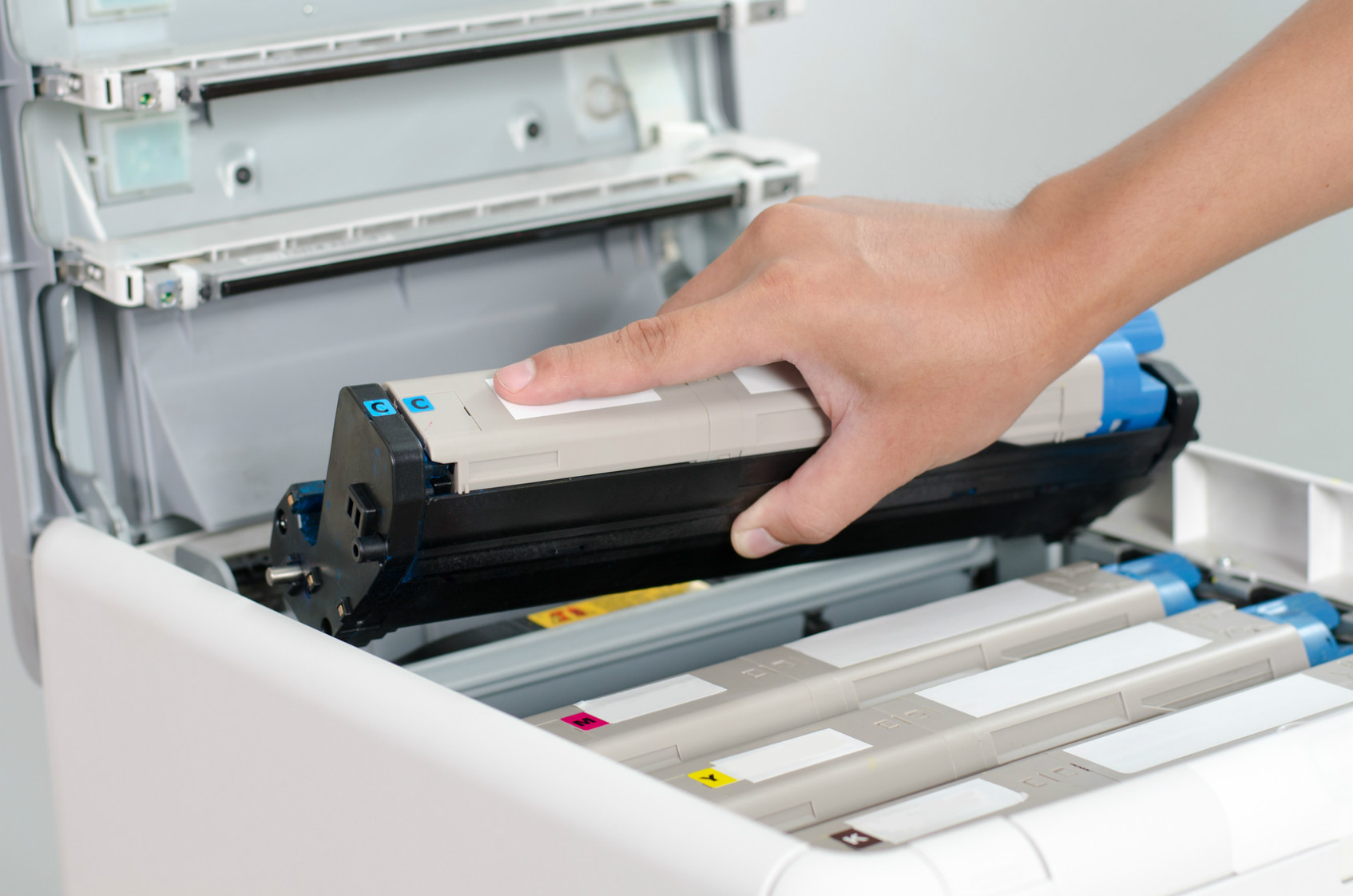Favoured by businesses and organisations across the globe thanks to their impressive all-round performance, laser printers have only recently entered maturity, having been developed and released much later than other printer types, including the inkjet. Upon their arrival in the printing stratosphere, laser machines were only capable of printing in black and white, limiting their customer base to workplaces. Now however, laser printers have evolved beyond recognition, offering full colour output as well as a range of other features to rival inkjet machines.
Put their superfast speeds and cost-effective yields to one side however, and laser printers do have downsides and limitations. In order to make an informed decision on whether a laser printer would be the best fit for your individual requirements, it’s vital you consider the pros and cons of this particular type of machine before investing your hard-earned money.
In the following guide, we’ll weigh up the pros and cons of laser printers to help you better understand the benefits and disadvantages of the technology, so you can decide if this, or another type of printer, is ultimately the one to go for.
But first, let’s take a look at the technology behind laser printers, and find out how the machines actually work.
How Laser Printers Work
Much like photocopiers, laser printers use a high intensity light (in this case, a laser) to map out and make an exact copy of a printed page. Where laser printers differ from photocopiers however, is that they use electronic data sent from your computer to arrange the text or images to be printed on to the sheet of paper.
Once the printer has received this data from the device, an electronic circuit within the machine activates, and begins deciphering the data to figure out how to apply it correctly to the page. The same circuit then sends a signal to the corona wire, which is essentially a high-voltage wire that charges nearby objects with static electricity.
Using masses of static electricity (enough to stick hundreds of balloons to your woolly jumper), the corona wire charges the photoreceptor drum to the point in which it gains a positive charge across its entire surface.
While this is happening, a laser accurately draws the printed content on to the surface of the photoreceptor drum. The laser erases the positive charge at the points where it hits the drum, creating an area of negative charge in its place. Eventually the drum will be covered in an accurate representation of the document to print, made up of areas of negative and positive charge.
Next, positively charged toner particles are applied to the drum, sticking only to the areas which themselves have a negative charge. No area of the drum with a positive charge attracts any of the powdered toner, thus the image can be accurately applied to the paper.
A hopper feeds a sheet of paper towards the drum, first giving it a powerful positive charge using a further corona wire. As it moves past the drum, the negatively charged toner particles are attracted to the paper’s surface, where they remain as the sheet moves towards the fuser unit.
At this stage, the toner is only resting lightly on the paper’s surface; using a combination of pressure and heat, rollers fuse the toner to the paper, creating a permanent and professional finish.
Now that we know just how laser printers work, it’s time to get down to the nitty-gritty and weigh up the pros and cons of the technology.
The Advantages of Laser Printers
To showcase the benefits of owning a laser printer, here we list the various advantages of the technology.
They’re Incredibly Fast
Whether you buy a high end or affordable laser printer, you’ll be amazed by the speed of the thing. On average, laser printers are capable of tossing out around 30-40 sheets per minute — more than quick enough to handle all of the demands of a busy workplace.
They’re Crystal Sharp
Given the technology they employ in the print process, laser printers are celebrated for their accuracy and clarity — particularly when producing text documents. Though traditionally not known for producing full colour images, modern laser printers are getting much better at printing photographs and colour graphics.
They’re Extremely Hardwearing
While other printer types may tire and develop faults over time as a result of heavy use, laser printers are built to last, and rarely ever break down. Sure, you might pay more for the technology than other printers, but you’ll be rewarded with years of hassle-free service.
They’re Cost Effective
While replacement toner cartridges are more expensive to buy than inkjet cartridges, they tend to offer a greater page yield, with the average toner cartridge delivering over 1,000 sheets in some cases. This makes them really cost effective, particularly for those who print often and a lot.
The Disadvantages of Laser Printers
As with all types of printer, laser machines do have their disadvantages and downsides, which you should be aware of before choosing to make a purchase.
They Don’t Offer Great Paper Variety
Unlike inkjet printers, which can seemingly print on all and sundry, laser printers are limited to a small number of paper options, mostly just standard printer and copier style papers. If you wanted to print on thick card or glossy photo paper, this would be ill-advised due to the heat and pressure involved in the laser printing process.
They’re Expensive to Buy
Or should we say they’re more expensive than inkjets. Although it is possible to buy a decent laser printer for under £200, they aren’t as ludicrously affordable as some inkjet machines, which may take them beyond the budget of some buyers.
They’re Still Not Great for Photos
Although laser printers have come a long way since they first entered the market, and have greatly improved in terms of full colour production, they still fall short of inkjets when printing photographs. While inkjets can layer and blend colour using liquid ink dots, lasers are limited to a single layer of coloured toner — somewhat diminishing the depth and tone of the final result.
They’re Big
Sure, laser printers have shrunk from the room-stealing monsters they once were, but they’re still bigger than inkjets due to the amount of mechanical components they house. For offices and other workspaces this isn’t likely to be an issue, but domestic users with limited space may want to consider alternatives.
If you’ve considered all other options and decided that a laser printer is the machine for you, click here to view our extensive selection of laser printers and affordable toners and consumables.


